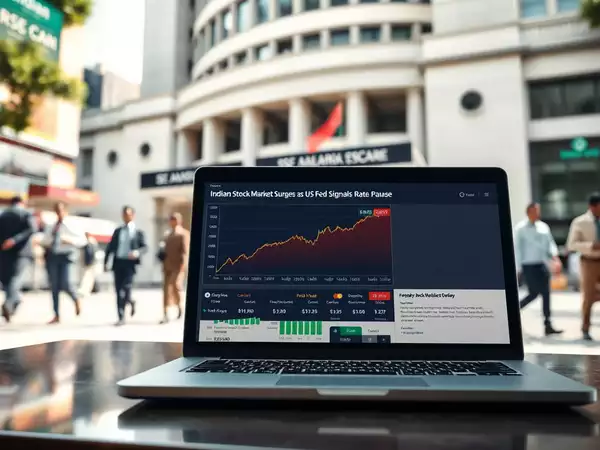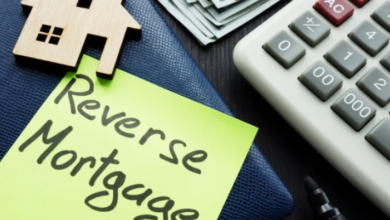The Secret Behind Stock Market Bubbles: Identifying Overheated Markets

The stock market has witnessed numerous booms and busts throughout history. While some rallies are based on solid economic fundamentals, others are driven by irrational exuberance, leading to what is commonly referred to as a market bubble. A stock market bubble occurs when asset prices are driven to unsustainable levels, far beyond their intrinsic value, often fueled by speculation and emotional investing. Identifying such bubbles can be challenging, but understanding their characteristics and triggers can help investors avoid the risks of investing in an overheated market.
In this article, we will explore the phenomenon of stock market bubbles, discuss how they form, highlight warning signs of an overheated market, and provide strategies for protecting your investments. Finally, we will discuss how to open demat account can facilitate smarter and more informed investing, especially during periods of heightened market volatility.
What is a Stock Market Bubble?
A stock market bubble is an economic cycle characterized by the rapid escalation of asset prices to levels far beyond their intrinsic value, followed by a sharp and often catastrophic decline. The key feature of a bubble is that it involves a disconnection between the price of an asset and its fundamental value, driven by speculative trading and investor psychology.
The Lifecycle of a Stock Market Bubble:
- Displacement: The bubble begins when investors spot a new and exciting opportunity, often linked to emerging technologies, sectors, or industries. The initial discovery causes excitement, and more investors begin to take notice.
- Boom: As more people buy into the trend, demand for the asset rises, driving prices up. Optimism about future growth feeds the rally, and more investors jump on the bandwagon.
- Euphoria: At this stage, the market becomes increasingly disconnected from fundamentals. Investors start believing that prices will continue to rise indefinitely, often ignoring risk and disregarding any signs of market correction. Speculation becomes rampant, and the bubble reaches its peak.
- Profit-Taking and Panic: Eventually, the unsustainable rise in prices leads to the realization that the asset is overvalued. Early investors begin to sell, and panic sets in as the price starts to fall. The collapse is often swift, and the market crashes.
- Depression: After the bubble bursts, prices can remain low for extended periods, leading to a sense of pessimism and loss of investor confidence. It can take years for markets to recover from the damage caused by the bubble.
See also: Restaurant Renaissance: MRX-15 – The Secret Ingredient for Success
Key Drivers of Stock Market Bubbles
Several factors contribute to the formation of stock market bubbles. While speculative behavior is often the central force, other economic, psychological, and structural elements play a role in inflating and eventually popping the bubble.
1. Irrational Exuberance
The term “irrational exuberance” was famously coined by former Federal Reserve Chairman Alan Greenspan to describe the psychological phenomenon where investors act based on overly optimistic expectations, ignoring basic economic principles and risk. This exuberance can lead to prices being pushed far beyond what is justified by the company’s earnings, growth potential, or overall market conditions.
2. Speculation and Leverage
Speculative trading involves buying assets with the expectation that their prices will continue to rise. This often leads to a self-fulfilling prophecy, where rising prices attract more speculators, further pushing up the price. Leverage—borrowing money to buy more assets—can exacerbate this effect. When asset prices rise, those who borrowed money to invest can amplify their profits, but when the market turns, they face significant losses, which can lead to a domino effect.
3. Easy Access to Credit
In many cases, stock market bubbles are fueled by easy access to credit. When interest rates are low or borrowing is easy, investors are more likely to take on more debt to finance their purchases, inflating asset prices even further. This was a key factor in the housing bubble of 2007–2008, where easy mortgage lending led to unsustainable home price growth.
4. Herd Mentality
The herd mentality refers to the tendency of investors to follow the actions of the crowd, particularly during periods of market optimism. As prices begin to rise, more investors feel compelled to buy, fearing they might miss out on potential profits. This herd behavior can perpetuate the bubble and lead to market instability when sentiment shifts.
5. Media and Analyst Hype
Media coverage and analyst recommendations can drive market sentiment and contribute to the creation of a bubble. When the media frequently touts a stock or sector as the next big thing, retail investors often rush in, driven by the belief that they might miss out on an exceptional opportunity. This hype can push valuations to unsustainable levels.
Warning Signs of an Overheated Market
Identifying a bubble before it bursts is difficult, but there are certain warning signs that investors can watch for to gauge whether a market is becoming overheated.
1. Skyrocketing Valuations
One of the clearest signs of an overheated market is when asset valuations—such as the price-to-earnings (P/E) ratio, price-to-sales (P/S) ratio, or price-to-book (P/B) ratio—reach historically high levels without any fundamental justification. When these metrics are far above the long-term average, it could indicate that the stock or sector is overvalued.
For example, during the Dot-com bubble of the late 1990s, technology stocks had P/E ratios far above the average, even though many of these companies had little or no earnings to justify their sky-high valuations.
2. Excessive Speculation and Leverage
Another warning sign is a surge in speculative trading and the use of leverage. If investors are borrowing money to buy more stocks or if there is a marked increase in margin trading, it could indicate that the market is becoming overinflated. This speculative behavior often leads to unsustainable price increases that eventually lead to a sharp correction.
3. Unprecedented Media Hype and FOMO
When a particular stock or industry receives excessive media coverage and dominates financial news, it can signal the peak of a bubble. The Fear of Missing Out (FOMO) effect often drives more retail investors to enter the market, further inflating prices. This can be particularly dangerous when the excitement is based on sentiment rather than solid fundamentals.
4. Disregard for Risk
In a bubble, investors often disregard risk and fail to perform proper due diligence. For example, during the housing bubble of the mid-2000s, many people took on subprime mortgages or invested in speculative real estate without fully understanding the risks. In the stock market, investors might continue to buy an overvalued stock simply because the price keeps rising, ignoring the underlying fundamentals.
5. Rapid Price Increases with Little to No Fundamental Change
If a stock or sector experiences rapid price increases without any significant changes to its fundamentals—such as earnings, revenue, or market share—it may indicate that the price is being driven by speculation and not real growth potential. Such price movements are often unsustainable.
How to Protect Yourself from Market Bubbles
While predicting the timing of a bubble’s burst is difficult, there are several strategies investors can use to protect themselves in overheated markets:
1. Focus on Fundamentals
Stick to companies with strong fundamentals—those with consistent revenue growth, stable earnings, and reasonable valuations. Avoid investing in stocks with inflated valuations driven solely by speculation.
2. Diversify Your Portfolio
Diversification is one of the best ways to reduce risk during volatile market periods. By holding a mix of asset classes, such as stocks, bonds, commodities, and international investments, you can protect your portfolio from a single asset or sector’s collapse.
3. Use Stop-Loss Orders
Implementing stop-loss orders can help protect against significant losses if a stock’s price falls rapidly. A stop-loss order automatically triggers a sale if the stock price drops below a certain threshold, helping to limit downside risk during a market correction.
4. Avoid Timing the Market
While it’s tempting to try and time the market, predicting when a bubble will burst is notoriously difficult. Instead, focus on long-term investment strategies that emphasize steady growth and diversification, rather than short-term speculation.
5. Remain Cautious of Overly Speculative Investments
Be cautious when dealing with investments that seem too good to be true, especially in sectors that are experiencing rapid growth without solid fundamentals. This could be a red flag for a potential bubble.
Opening a Demat Account: A Step Toward Smarter Investing
To navigate the stock market effectively, whether during a bubble or a stable market, it’s essential to have a reliable and efficient platform for buying and selling stocks. Opening a demat account allows you to store your securities electronically, making it easier to manage your investments and stay agile during market fluctuations. Most online brokers now offer user-friendly platforms that allow you to track market trends, access real-time data, and execute trades swiftly.
Open a Demat Account now to start investing wisely, and gain access to a wealth of tools and resources to help you identify market trends and avoid the risks of overheated markets.
Conclusion
Stock market bubbles are a natural part of the market cycle, but they can be dangerous for investors who are unprepared. Recognizing the warning signs of an overheated market, such as excessive speculation, sky-high valuations, and irrational investor behavior, can help you protect your investments and avoid costly mistakes. By focusing on sound investing principles, diversifying your portfolio, and opening a demat account, you can better navigate periods of market volatility and reduce your exposure to the risks of market bubbles. Stay informed, stay cautious, and invest with a long-term perspective to safeguard your financial future.




